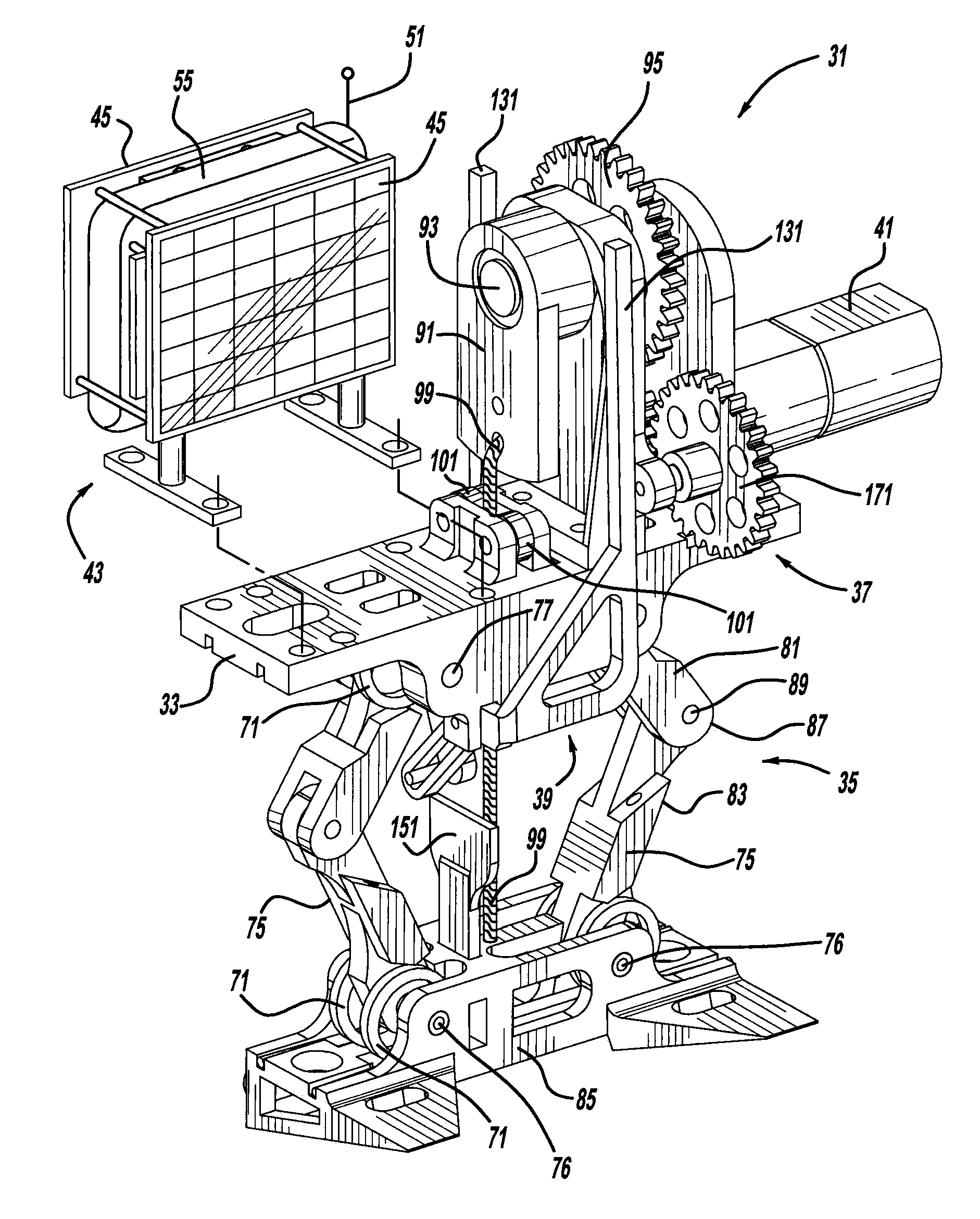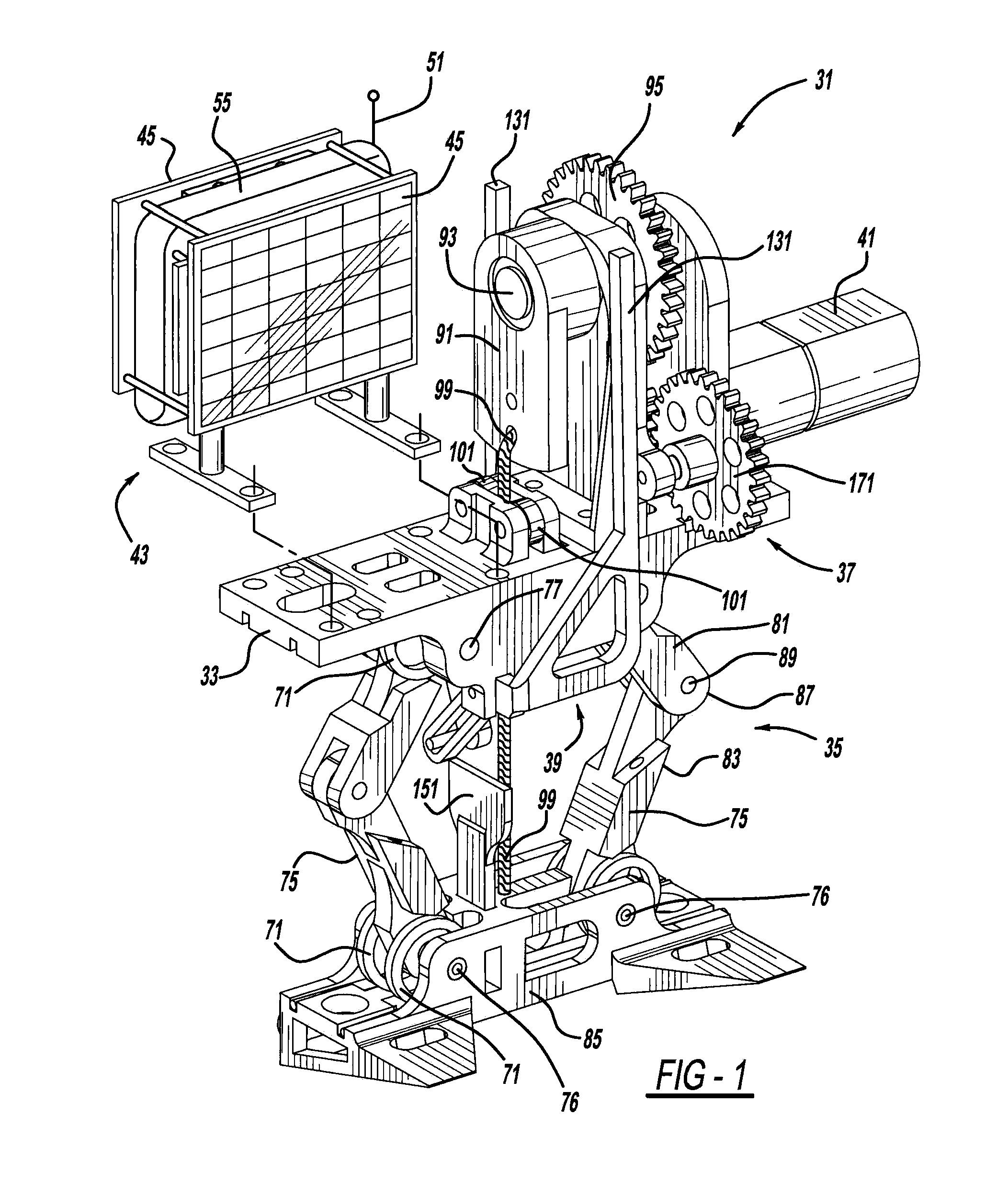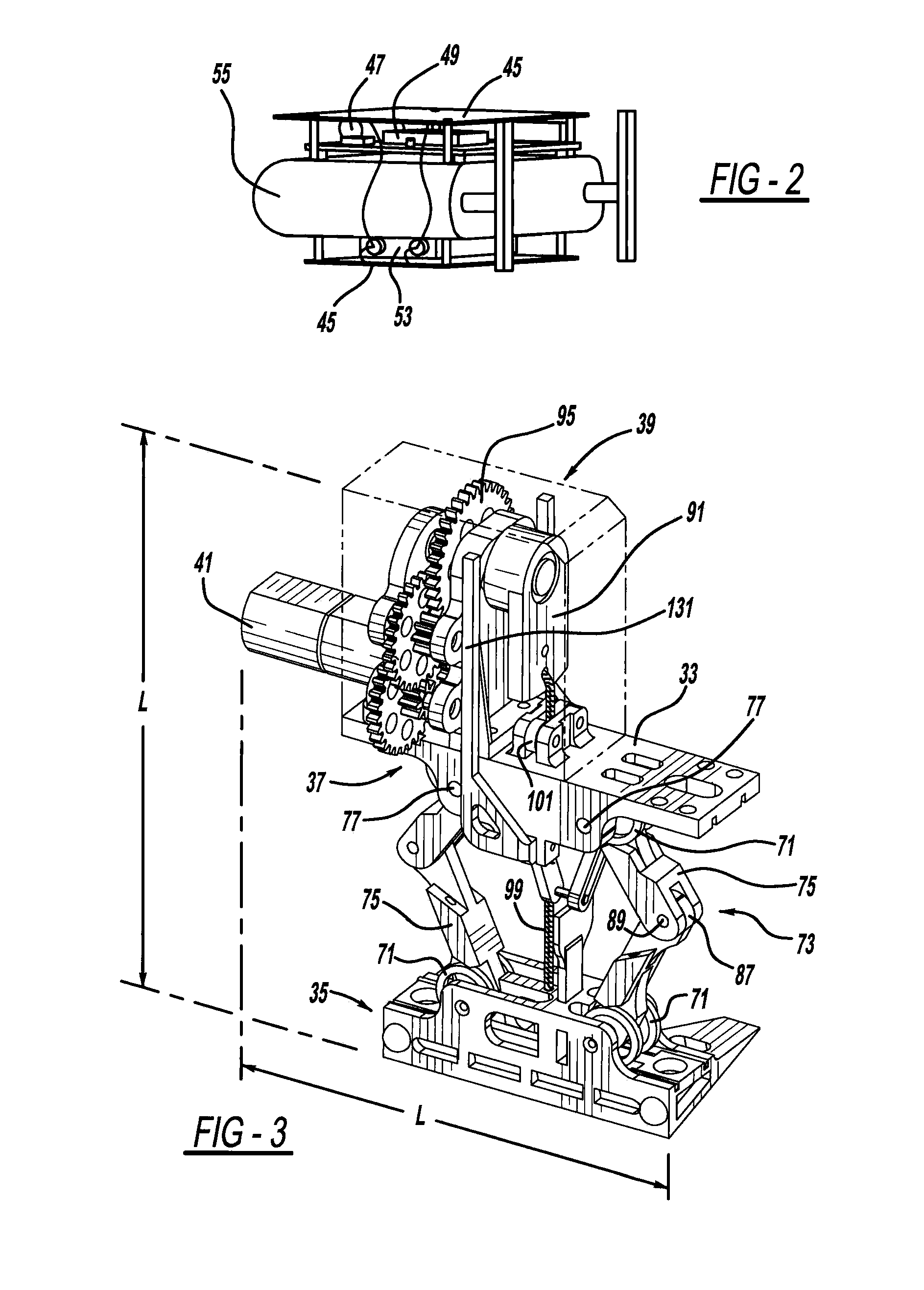Jumping robot
a robot and jumping technology, applied in the field of robots, can solve the problems of multiple actuators, large battery power consumption, heavy weight of traditional jumping robots, etc., and achieve the effects of large jumping height, long jumping distance, and small siz
- Summary
- Abstract
- Description
- Claims
- Application Information
AI Technical Summary
Benefits of technology
Problems solved by technology
Method used
Image
Examples
Embodiment Construction
[0039]The preferred embodiment of a jumping robot 31 as shown in FIGS. 1-3, includes a body 33, a jumping mechanism 35, a steering and transmission mechanism 37, a self-righting mechanism 39 and a single actuator 41. An accessory assembly 43 is also mounted to body 33 and includes solar panels 45 for generating electricity, sensors 47, a communications transmitter and receiver 49, an antenna 51, a battery 53 and a microprocessor based controller 55. The robot employs four mechanisms. The first one is jumping mechanism 35 that transforms stored energy into the kinetic energy for take-off. The second one is an energy or crank device that charges the energy and releases it instantly. The third one is self-righting mechanism 39 to have the robot stand up from any landing posture. The last one is steering mechanism 37 that changes the jumping direction of robot 31.
[0040]A. Jumping Mechanism:
[0041]Reference should be made to FIGS. 1, 6-10, 23 and 24. Torsion springs 71 are used to store e...
PUM
 Login to View More
Login to View More Abstract
Description
Claims
Application Information
 Login to View More
Login to View More - R&D
- Intellectual Property
- Life Sciences
- Materials
- Tech Scout
- Unparalleled Data Quality
- Higher Quality Content
- 60% Fewer Hallucinations
Browse by: Latest US Patents, China's latest patents, Technical Efficacy Thesaurus, Application Domain, Technology Topic, Popular Technical Reports.
© 2025 PatSnap. All rights reserved.Legal|Privacy policy|Modern Slavery Act Transparency Statement|Sitemap|About US| Contact US: help@patsnap.com



